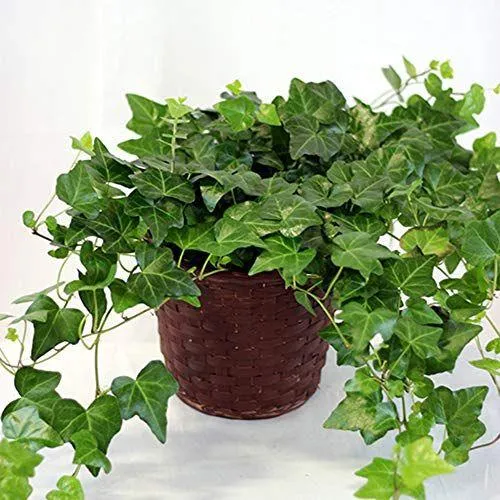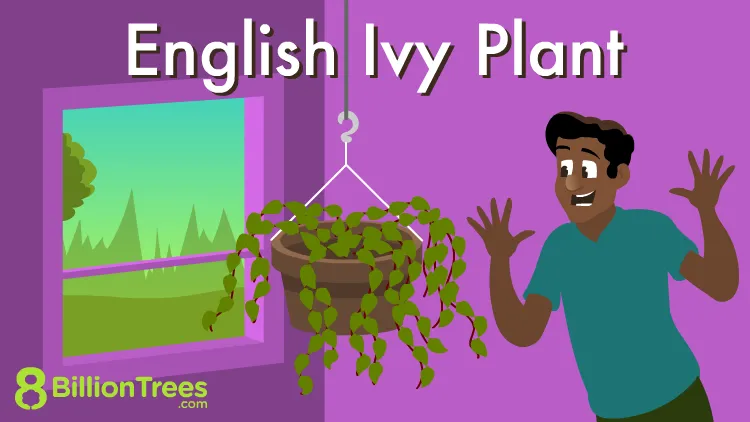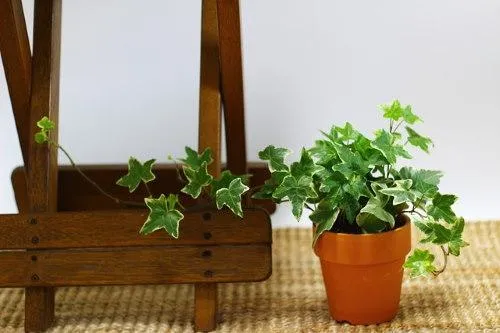A Comprehensive Guide to Growing English Ivy (Hedera helix) Indoors
If you’re searching for information on indoor hedera helix, you’ve come to the right place. As an avid gardener with over 15 years of experience growing various houseplants, I hope this guide provides answers to all your questions about cultivating English ivy successfully within your home. Let’s start with the basics.
What is Hedera Helix?
Commonly known as English ivy, Hedera helix is a versatile evergreen climbing plant native to Europe, North Africa and Asia. Characterized by its dark green foliage and waxy, round leaves that come to a point, this vining species thrives in shaded areas both indoors and outdoors. It can grow upwards on structures or trail along the ground, forming dense groundcovers in woodlands. Hedera helix is known for being extremely hardy and tolerant of different environmental conditions, which makes it a popular choice for indoor container gardening.
Choosing a Plant
When selecting an English ivy plant for inside your home, choose a small to medium-sized one that is not too big for its pot. Look for healthy green leaves without any signs of pests, diseases or discoloration. Make sure the soil is moist but not soaked. Avoid weak, struggling plants that may not adapt well to indoor conditions. Reputable nurseries usually sells plants that are ready to thrive after repotting. If possible, choose a variety with variegated or colorful leaves for visual interest.
Ideal Growing Conditions
While English ivy is very tolerant, establishing the right growing conditions from the start is key to its long-term survival indoors:

- Light: English ivy thrives in medium to low light. East-, west- or north-facing windows provide the perfect dappled shade it prefers. Avoid direct southern sunlight that could scorch its leaves.
- Temperature: English ivy grows best at average room temperatures between 65 to 75°F. It can tolerate cooler spots near windows in winter.
- Water: Allow the top inch of soil to dry out between waterings. Water thoroughly whenever the soil feels dry to the touch and avoid soggy conditions.
- Humidity: Mist leaves occasionally or place the pot on a pebble tray with water to increase ambient humidity, which English ivy enjoys.
- Potting mix: Use a well-draining soil specifically for houseplants like orchid bark mixes. Avoid heavy clay or soggy potting soils.
Care Tips That Work
Here are some additional tips I’ve found effective through trial and error to keep your indoor English ivy thriving:
- Prune regularly: Trim off any dead or leggy growth to promote bushier growth. Cut four inches above a node.
- Fertilize monthly: During the growing season, use a dilute liquid houseplant fertilizer according to label directions.
- Repot yearly in spring: Transfer to a slightly larger pot using fresh potting mix if the roots have filled the container.
- Support climbing varieties: Provide a moss pole, trellis or stakes for vines to trail upon rather than allowing it to creep along the floor.
- Watch for pests: Isolate immediately if seeing any signs of pests like spider mites or mealybugs and treat accordingly.
Dealing with Pests and Problems
Despite the hardiness of English ivy, some common issues may occur indoors. Here are solutions from personal experience:
- Yellow leaves: Overwatering is usually the culprit. Improve drainage and allow the soil to dry more between waterings.
- Brown edges on leaves: This indicates low humidity. Group plants together or use a humidifier to raise ambient levels around 45-50%.
- Mealybugs: Isolate the plant and wipe them off carefully with cotton balls dipped in rubbing alcohol. Repeated treatments may be needed.
- Spider mites: Spray leaves with insecticidal soap or neem oil. Better yet, avoid this pest proactively by keeping humidity up and leaves dry.
Propagation and Division
English ivy is easily propagated from stem or leaf cuttings. Simply remove 4-6 inch vine tip cuttings in spring, remove lower leaves, and root in water or damp potting mix. You can also divide mature/root-bound clumps in spring by teasing plants apart and repotting pieces. This allows creating multiple new plants from one mother plant.
Uses and Benefits of English Ivy Indoors
Aside from being a versatile houseplant that cleans indoor air, English ivy has many creative uses:

- Train as a tabletop plant cascading over the edge
- Use trailing types as a hanging basket or installed on a moss pole
- Create a lush indoor garden by combining ivy with other shade-loving plants
- Cover unsightly walls, columns or bookshelves with its clinging foliage
- Enhance privacy by training it on fences or lattices
Dealing with Critters and Kids
While generally non-toxic to pets, keep English ivy out of reach of curious dogs and cats who may nibble. Wash hands thoroughly after contact to prevent accidental ingestion. With young kids and toddlers, choose a location up high or behind a safety gate. Supervise playtime to avoid pulling or breaking leaves that could be a mouthful. Overall English ivy produces attractive greenery indoors safely when common sense precautions are followed.
Final Thoughts
I hope this comprehensive guide has answered any questions you may have had about cultivating English ivy successfully as an indoor houseplant. From my years of growing experience both outdoors and in, this hardy evergreen truly thrives with minimal care. With its versatility and ease of propagation, it makes an excellent choice to beautify your home décor naturally. Please feel free to reach out if any other indoor plant queries arise – I’d be happy to help further. Happy gardening!
Choosing an Indoor English Ivy
| Variety | Growth Rate | Light Needs | Care Needs |
|---|---|---|---|
| English Ivy | Fast | Low to Medium | Water when top inch of soil is dry |
| Canary Island Ivy | Medium | Medium to Bright | Water weekly, mist leaves |
| Swedish Ivy | Slow | Low to Medium | Water when top inch of soil is dry, tolerate low light |
| Needlepoint Ivy | Medium | Medium to Bright | Water weekly, prune to maintain shape |
| Atlantic Star | Fast | Low to Medium | Water weekly, maintain uniform shape with pruning |
FAQ
-
What type of plant is indoor holly?
Indoor holly, also known as English ivy, is basically a climbing or trailing woody vine. It grows superbly well indosely inside homes.

-
How do you care for an indoor holly plant?
Watering your indoor holly moderately seems to work best. They also need bright light but not direct sun beams. Prune it if it gets also long. Overall, indoor holly is quite simple as long as you water and light it nicely.
-
Do indoor hollies need fertilizer?
While indoor hollies can survive without fertilizer, providing some nutrients seems to help them thrive better. You can fertilize every few months in the spring and summer using a diluted liquid plant food. However, going overboard with fertilizer may not actually benefit the plant. Moderation is key.
-
Is indoor holly poisonous?
Despite some reports, indoor holly is likely not extremely dangerous if eaten. Nevertheless, it’s best to keep it out of reach of kids and pets just to be safe. The berries might cause upset tummies at most. Personally, I wouldn’t chance it with kids around. Maybe I’m too cautious!
-
Can indoor hollies grow too large?
If given plenty of time and the right care, indoor hollies can sort of expand quite a lot. They may eventually outgrow their space. But with some pruning and containment, you can mostly stop them from getting overwhelming size-wise. Appears careful trimming once in a while does the trick.

-
Are indoor hollies difficult to care for?
In fact, indoor hollies are one of the easier houseplants to look after. As mentioned, they tolerate low light and don’t demand much water. Amazingly, their trouble-free nature makes them well-suited to novice green thumbs. I’d say indoor hollies are a great option for folks dreading plant murder.
-
What issues can indoor hollies have?
Potential problems include too much sun exposure, underwatering, and overwatering. Pests are also possible but rare. Overall, indoor hollies are remarkably sturdy. Just keep an eye out for yellowing leaves which could mean the plant isn’t stoked. But with basic care, most hollies thrive splendidly indoors for years!
